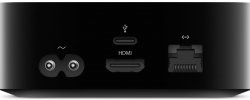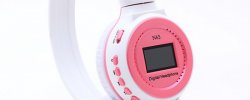Coaxial Digital Audio Cables

Digital audio cables (or, as they're often called, SPDIF cables) provide a handy way to route multi-channel audio from one device to another with minimal to no signal loss. The specs for a coaxial digital audio cable are the same as for a typical video cable: 75 ohm impedance, coaxial construction. A good impedance match, and wide bandwidth, help keep the digital square-wave signal from rounding off to a point where data loss occurs, so impedance consistency and wide bandwidth are important here, just as in video cabling. The other option, optical or "TOSlink" digital audio cable, carries the same signal in plastic optical fiber; it's less robust over distance, but is generally reliable up to about 50 feet in good fiber.
Coaxial Digital Audio Cable: Belden 1694A
Our favorite cable for coaxial digital audio use (many others are available; see ) is Belden 1694A "Brilliance" precision digital video coaxial cable, a 75 ohm coax engineered for low signal loss over long runs. These cables are exceptionally well shielded to keep outside electromagnetic interference from entering and polluting the signal; the shielding consists of a combination of a dense (95% coverage) tinned copper braid and a double-sided aluminum-on-polyester foil, for the best protection both against EMI and RFI. View the technical specs for Belden 1694A.
The Connectors: Canare RCAPs
Connectors are a critical part of any cable, because if the coax isn't well-joined to the connectors, or if the connectors don't make firm electrical contact with the jacks, it doesn't much matter how good the coax is. For mechanical stability and electrical performance, there's no better RCA plug available than the Canare RCAP. These Canare plugs are designed for the best possible impedance match with 75 ohm video coax. These plugs crimp tightly to both the center conductor and the coaxial shield, so that the shielding of the whole cable assembly is tight and uninterrupted. The RCAP's gold-plated "internal pressure contact fingers" provide a strong, tight, electrically sound connection with equipment jacks, without the excessive tightness of many competing designs. View Canare's description and specs for the RCAP plugs. Need BNC plugs or F-connectors instead? See
Optical Digital Audio Cable: Mitsubishi Eska POF
When we have a choice, we prefer to run digital audio in coax; it's more robust over distance, and the cable is interchangeable with cable used for certain other applications (e.g., composite video). However, an increasing number of devices are coming onto the market with digital audio available only in optical form, following the TOSlink standard. For these applications, we build our optical cables using the finest high-performance Plastic Optical Fiber (POF), Mitsubishi's ESKA Fiber. While POF is in general rather lossy stuff compared to glass optical fiber, we prefer it for optical digital audio use because it's much more physically durable and because its aperture matches the spec for optical digital audio use, unlike glass fiber which is too small and must be used in bundles. Our fiber is encased first in a tough cladding layer and then, for added durability, a flexible outer PVC jacket similar in texture to the PVC on some of our high-flex Belden cables (e.g. Belden 1505F). In our own usage, we've tested these cables at lengths up to 50 feet and found them to perform perfectly even at those extended distances.





